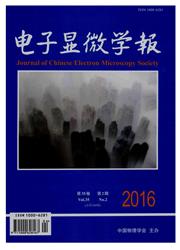

 中文摘要:
中文摘要:
本文利用原位EBSD技术研究了多晶纯钛在拉伸变形过程中的孪生变形行为。在0%~7.1%变形阶段,形成的孪晶为{1122}一次孪晶,当变形增加至16.4%时,在{1122}一次孪晶内形成{1012}二次孪晶。通过计算应力方向与晶体C轴夹角,判断出容易出现{1122}压缩孪晶和{1012}拉伸孪晶,理论计算得到的结果与实验结果一致。孪晶的形核位置为与周围相邻晶粒取向差最大的晶界处,即高角度晶界处,这为多晶材料的塑性变形模拟提供了实验参考。
 英文摘要:
英文摘要:
The twinning deformation behaviors of polycrystal pure titanium were studied by in situ EBSD technique. The results show that the primary twin formed during 0% ~7% strain is{1122} compressive twin, while the secondary{1012} tensile twin forms when the strain increases to 16?4%. The geometry angle between the loading direction and c?axis of crystal indicates that {1122}compressive twin and {1012} tensile twin are easier to form. The theoretical calculation is in well consistent with the experimental results. The nucleation site of twin is located in a grain boundary with highest misorientation comparing with the other boundaries, i. e. , high angle boundary. The results provide experimental insight into modeling of plastic deformation in HCP structured polycrystalline metals.
 同期刊论文项目
同期刊论文项目
 同项目期刊论文
同项目期刊论文
 期刊信息
期刊信息
